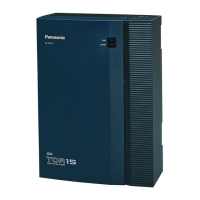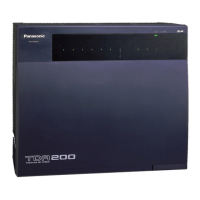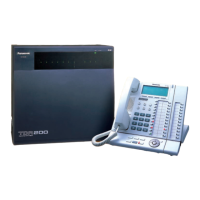1.20 Voice Mail Features
Feature Guide 247
1.20 Voice Mail Features
1.20.1 Voice Mail (VM) Group
Description
A VPS can be connected to extension ports of the PBX. The extension ports make a group, called a VM
group. This group has a floating extension number. The VM group can be the destination for redirected calls
and incoming calls. When receiving a call, the VPS can greet the caller offering them the option to leave a
message or dial a number to reach the desired party. The VPS can record the message for each extension
and leave notification on the corresponding extension, if the called extension is not able to answer calls.
1. VM Group Type
[Example]
VM (DTMF) Group Assignment:
The VPS is connected to the SLT ports of the PBX. These SLT ports, as well as VM (DTMF) Group
settings, must be configured to allow DTMF Integration, as shown in the following [Programming
Example of Extension Port] and [Programming Example of VM (DTMF) Group].
VM (DPT) Group Assignment:
The VPS is connected to the DPT ports of the PBX. These DPT ports, as well as VM (DPT) group
settings, must be configured to allow DPT (Digital) Integration, as shown in the following [Programming
Example of Extension Port] and [Programming Example of VM (DPT) Group].
Type Description
VM (DTMF) Group
A group of SLT ports which use the Voice Mail DTMF Integration
features.
A maximum of 2 groups can be assigned.
VM (DPT) Group
A group of DPT ports which use the Voice Mail DPT (Digital)
Integration features.
• One VM (DPT) group can be assigned.
• A maximum of four ports (eight channels) of the VPS can
form a group.
PBX
SLT
Port
SLT
Port
SLT
Port
SLT
Port
VPS
(DPT [Digital] Integration)
VPS
(DTMF Integration)
DPT
Port
DPT
Port
DPT
Port
DPT
Port
DPT
Port
VM (DPT) Group
Floating extn. no. 500 (default)
VM (DTMF) Group
Floating extn. no. 250
Extn.101 Extn.102 Extn.103 Extn.104
Extn.117 Extn.118 Extn.119 Extn.120
SLT
Port

